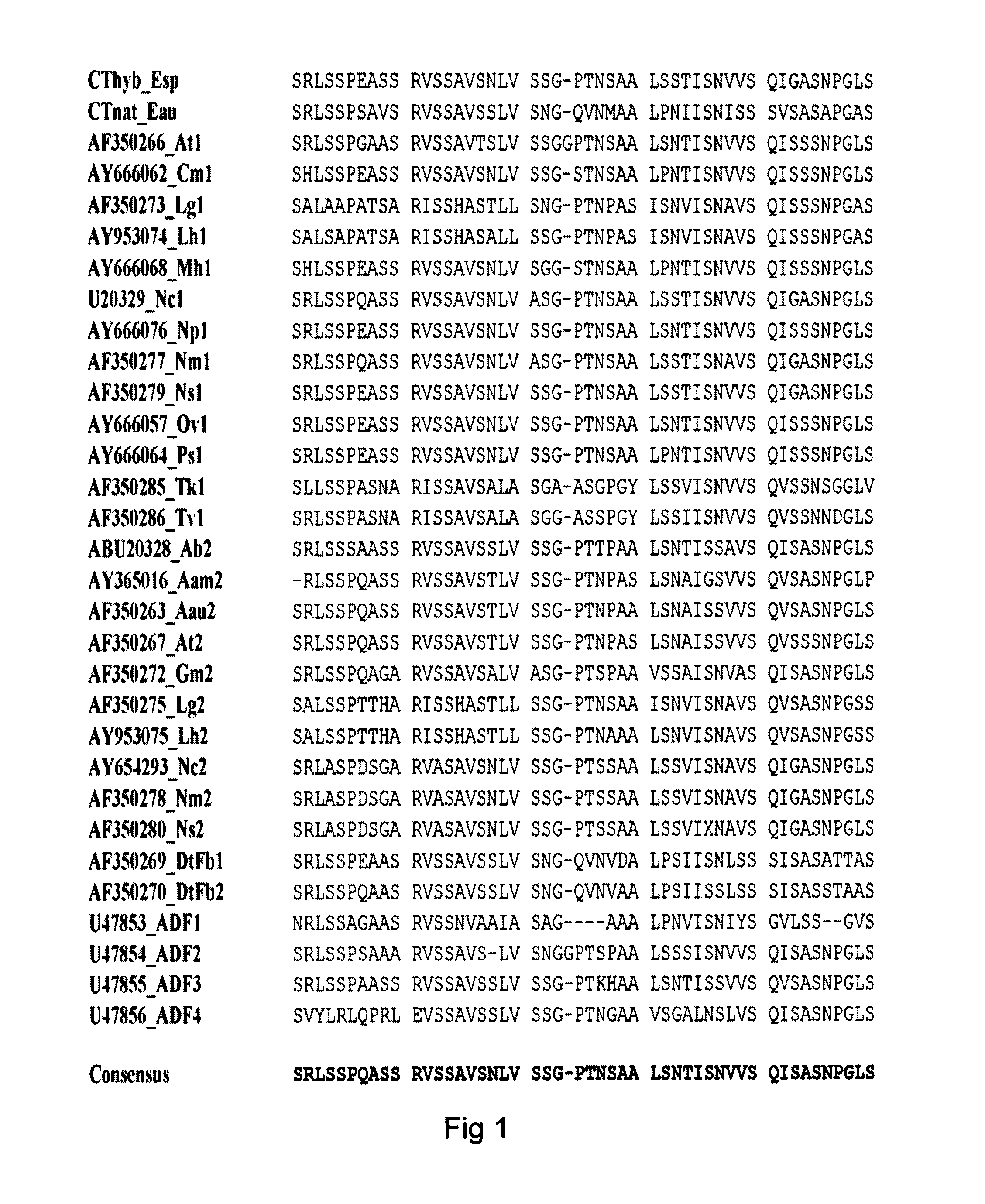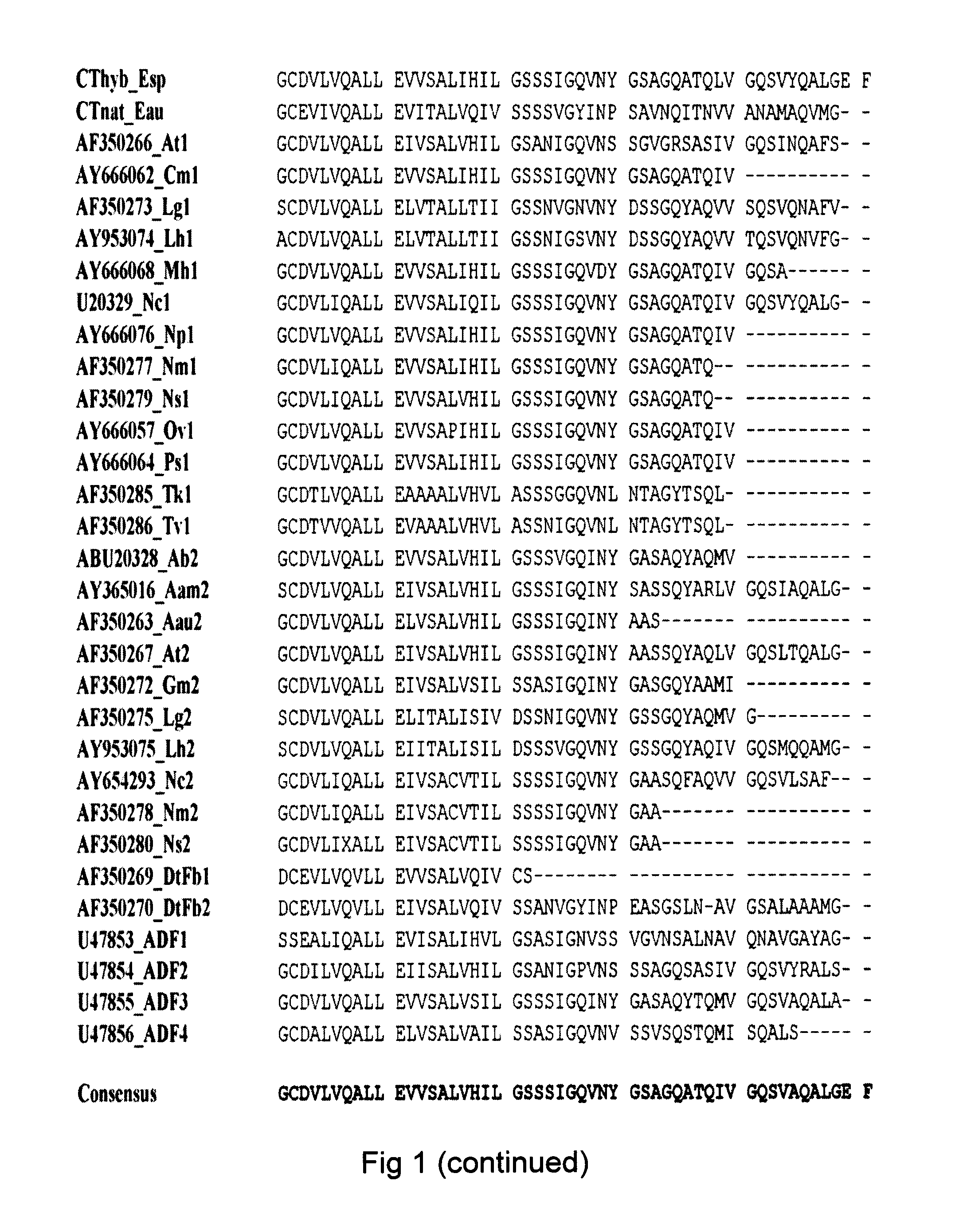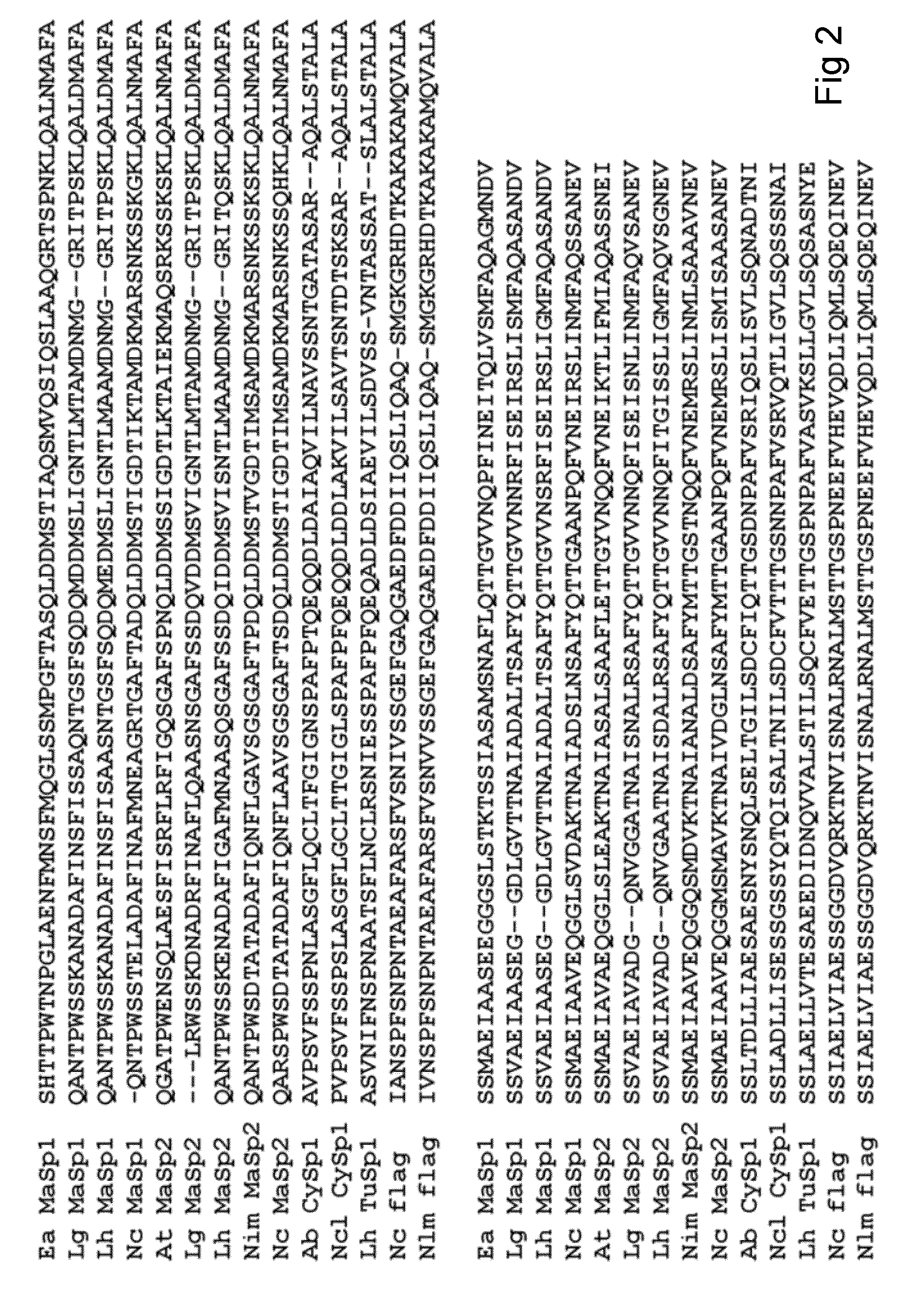Spider silk fusion protein structures for binding to an organic target
a technology of spider silk and fusion protein, which is applied in the field of fusion proteins comprising moieties derived from spider silk proteins, can solve the problems of chemical coupling requiring conditions which are unfavorable for protein stability and/or function
- Summary
- Abstract
- Description
- Claims
- Application Information
AI Technical Summary
Benefits of technology
Problems solved by technology
Method used
Image
Examples
example 1
Cloning, Expression and Fiber Formation of an IgG-Binding Fusion Protein
[0158]To prove the fusion protein concept, a Rep4CT protein (a REP moiety with 4 internal repeats and a CT moiety) was produced in fusion with the Z protein domain (a B moiety). The Z domain is an engineered version of the immunoglobulin G (IgG) binding domain B of staphylococcal protein A, and is a 58 amino acid long triple-helix motif that binds the fragment crystallisable (Fc) region of IgG. Our aim was to investigate whether it is possible to produce structures, such as fibers, films and membranes, from a fusion protein consisting of the Z domain fused to Rep4CT (denoted His6ZQGRep4CT, SEQ ID NO: 14) and still retain the IgG-binding ability of domain Z, as well as the structure forming properties of Rep4CT. In order to do so a fusion protein consisting of the Z domain N-terminally to Rep4CT was cloned.
[0159]A gene encoding the His6ZQGRep4CT fusion protein (SEQ ID NOS: 14-15) was constructed as follows...
example 2
Binding of Biotinylated IgG to Fusion Protein Fibers
[0165]To further prove the fusion protein concept, it was studied whether the B moiety in a fusion protein structure retains its capacity of selective interaction with an organic target. In this study, the ability of the Z domain (B moiety) in fibers of the fusion protein His6ZQGRep4CT (SEQ ID NO: 14) to bind IgG was assessed. A solution of biotinylated rabbit IgG was incubated with His6ZQGRep4CT fibers, after which the same fibers were incubated in a solution with streptavidin-functionalized beads, and the fibers were subsequently visualized in a light microscope. The choice of using IgG made in rabbit falls back on the fact that IgG from rabbit bind with strong affinity to the Z domain.
[0166]An approximately 50 mm long His6ZQGRep4CT fiber, prepared as described in Example 1, was immersed in a binding solution containing 50 μl of 1×PBS / 0.5% bovine serum albumin and 10 μl of 0.5 mg / ml biotinylated IgG produced in rabbit (anti-rat I...
example 3
Binding of Pure and Serum IgG to Fusion Protein Fibers and Films
[0170]To further explore the capacity of the B moiety in a fusion protein structure of selective interaction with an organic target, the ability of domain Z in the fusion protein His6ZQGRep4CT (SEQ ID NO: 14) to bind IgG was studied. Fibers and films of this fusion protein were used for binding of purified IgG and IgG from serum, followed by elution and subsequent analysis on SDS-PAGE, where IgG under non-reducing conditions appears as a ˜146 kDa band. Serum is the remaining fluid phase after blood clotting, and the two main constituents of serum are albumin and IgG. In rabbit serum, for example, the concentration of IgG is 5-10 mg / ml and that of albumin even higher. Purified IgG and serum were both of rabbit source.
[0171]Films of His6ZQGRep4CT were prepared by air-drying 100 μl of protein solution (0.96 mg / ml) over night at room temperature at the bottom of individual wells of a 24-well tissue culture plate. The casted...
PUM
| Property | Measurement | Unit |
|---|---|---|
| size | aaaaa | aaaaa |
| temperature | aaaaa | aaaaa |
| thickness | aaaaa | aaaaa |
Abstract
Description
Claims
Application Information
 Login to View More
Login to View More - R&D
- Intellectual Property
- Life Sciences
- Materials
- Tech Scout
- Unparalleled Data Quality
- Higher Quality Content
- 60% Fewer Hallucinations
Browse by: Latest US Patents, China's latest patents, Technical Efficacy Thesaurus, Application Domain, Technology Topic, Popular Technical Reports.
© 2025 PatSnap. All rights reserved.Legal|Privacy policy|Modern Slavery Act Transparency Statement|Sitemap|About US| Contact US: help@patsnap.com



